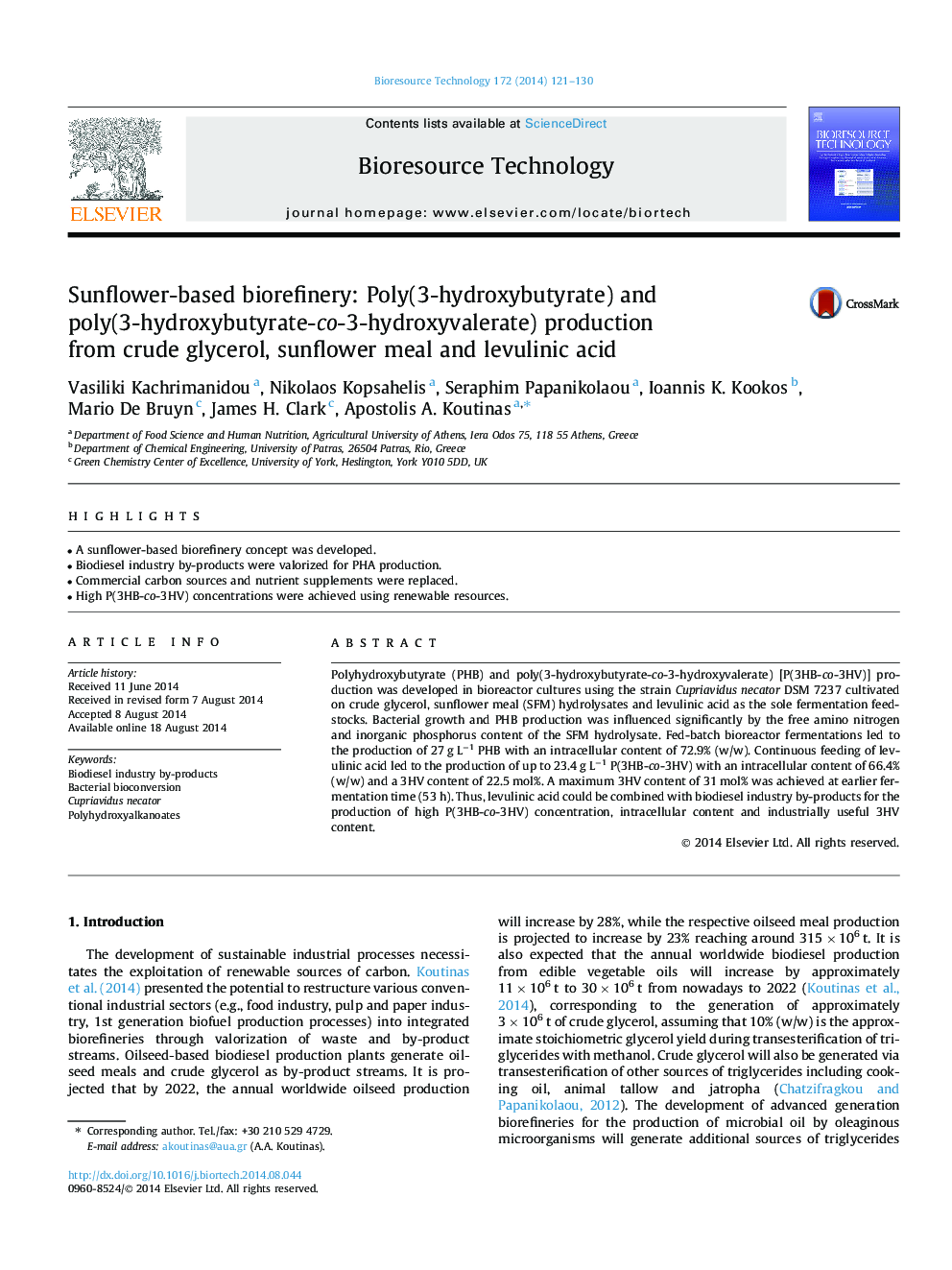| کد مقاله | کد نشریه | سال انتشار | مقاله انگلیسی | نسخه تمام متن |
|---|---|---|---|---|
| 680515 | 1459971 | 2014 | 10 صفحه PDF | دانلود رایگان |
• A sunflower-based biorefinery concept was developed.
• Biodiesel industry by-products were valorized for PHA production.
• Commercial carbon sources and nutrient supplements were replaced.
• High P(3HB-co-3HV) concentrations were achieved using renewable resources.
Polyhydroxybutyrate (PHB) and poly(3-hydroxybutyrate-co-3-hydroxyvalerate) [P(3HB-co-3HV)] production was developed in bioreactor cultures using the strain Cupriavidus necator DSM 7237 cultivated on crude glycerol, sunflower meal (SFM) hydrolysates and levulinic acid as the sole fermentation feedstocks. Bacterial growth and PHB production was influenced significantly by the free amino nitrogen and inorganic phosphorus content of the SFM hydrolysate. Fed-batch bioreactor fermentations led to the production of 27 g L−1 PHB with an intracellular content of 72.9% (w/w). Continuous feeding of levulinic acid led to the production of up to 23.4 g L−1 P(3HB-co-3HV) with an intracellular content of 66.4% (w/w) and a 3HV content of 22.5 mol%. A maximum 3HV content of 31 mol% was achieved at earlier fermentation time (53 h). Thus, levulinic acid could be combined with biodiesel industry by-products for the production of high P(3HB-co-3HV) concentration, intracellular content and industrially useful 3HV content.
Journal: Bioresource Technology - Volume 172, November 2014, Pages 121–130
